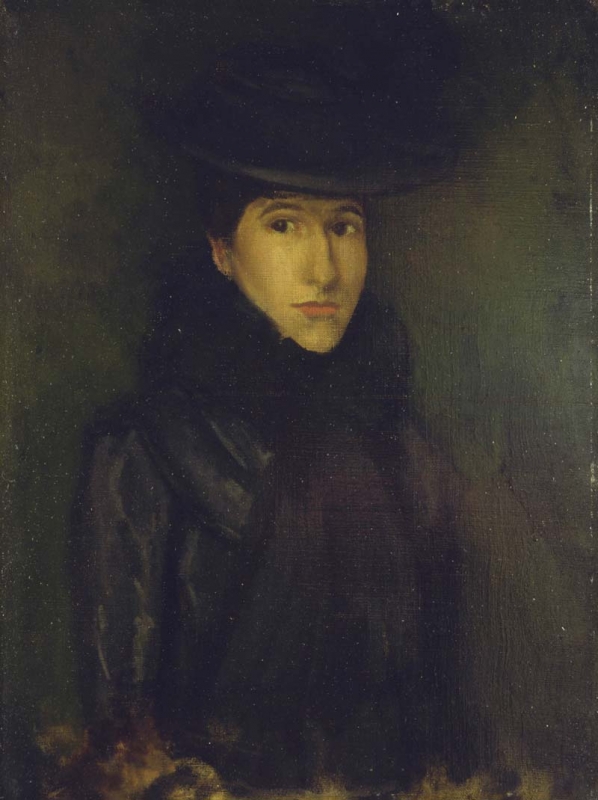Technique
This is painted very thinly indeed on an unusually coarse canvas, uneven and slubby, with about 10 threads/cm. The weave is prominent in the face and background. There is no priming. Oil has soaked into about 3 mm of the canvas, beyond the end of each brushstroke.
Dr Joyce H. Townsend notes, 'There is no underdrawing for the face. The same black pigment was used for the fur collar and the hat, but it was a different pigment (a brown) for the dark eyes.' Transmitted light revealed that the areas of thinnest paint were in the face – on the area around her eyes and the whites of the eyes, the end of her nose, her upper lip and chin – as well as on an area along the lowest edge of the canvas. 1 The top of her lip is precisely defined by a sharp-edged stroke of pink flesh coloured paint. The black costume is painted carefully and smoothly, but there are alterations to the shoulders. Dr Townsend adds:
'At the lower edge, some brushstrokes stop several centimetres short of the tacking margin. The rest of the canvas is fully covered in thinned paint, the face and the whites of the eyes being the most thinly painted areas. There is little or no rubbing. Some of the thickest canvas threads look very lightly abraded, but this might simply be wiping of paint from a canvas already saturated with oil. ...
There are no retouches or damages at all. This is an excellent example of an unaltered and little changed canvas painting by Whistler.' 2
It is possible, however, that some of the green areas in the background were reworked in 1902.
Conservation History
According to Dr Townsend, it is on 'unlined canvas on its original stretcher, with cusping at all edges, but less along the bottom as though it has been trimmed by 8-10 mm at most. It is unprimed, and ultra-violet examination suggests it has no significant amount of glue size either. … There is a natural resin varnish overall, very glossy, applied within the frame. Beneath this is another natural resin varnish covering the whole sight area.' 3
Last updated: 25th November 2020 by Margaret






